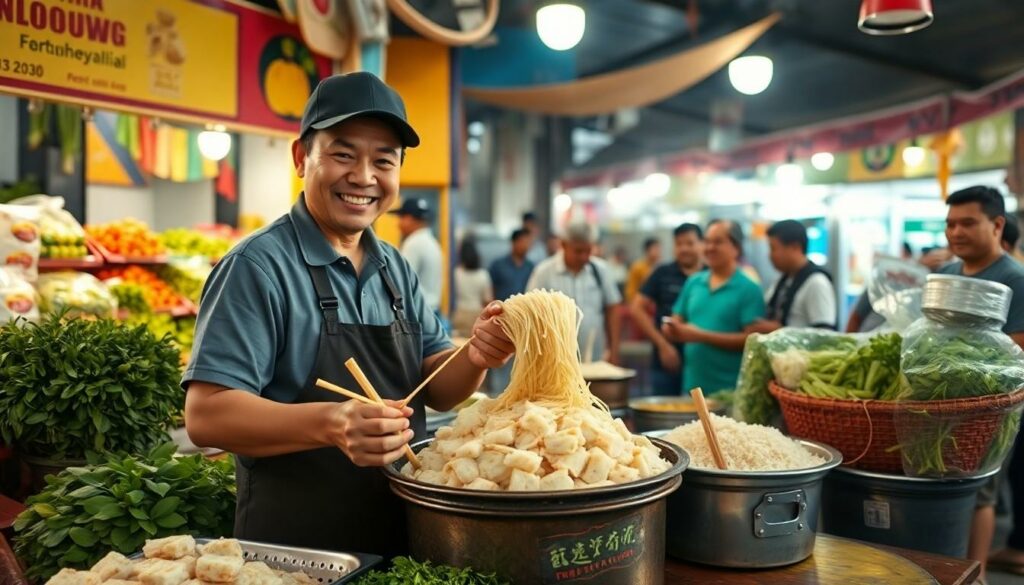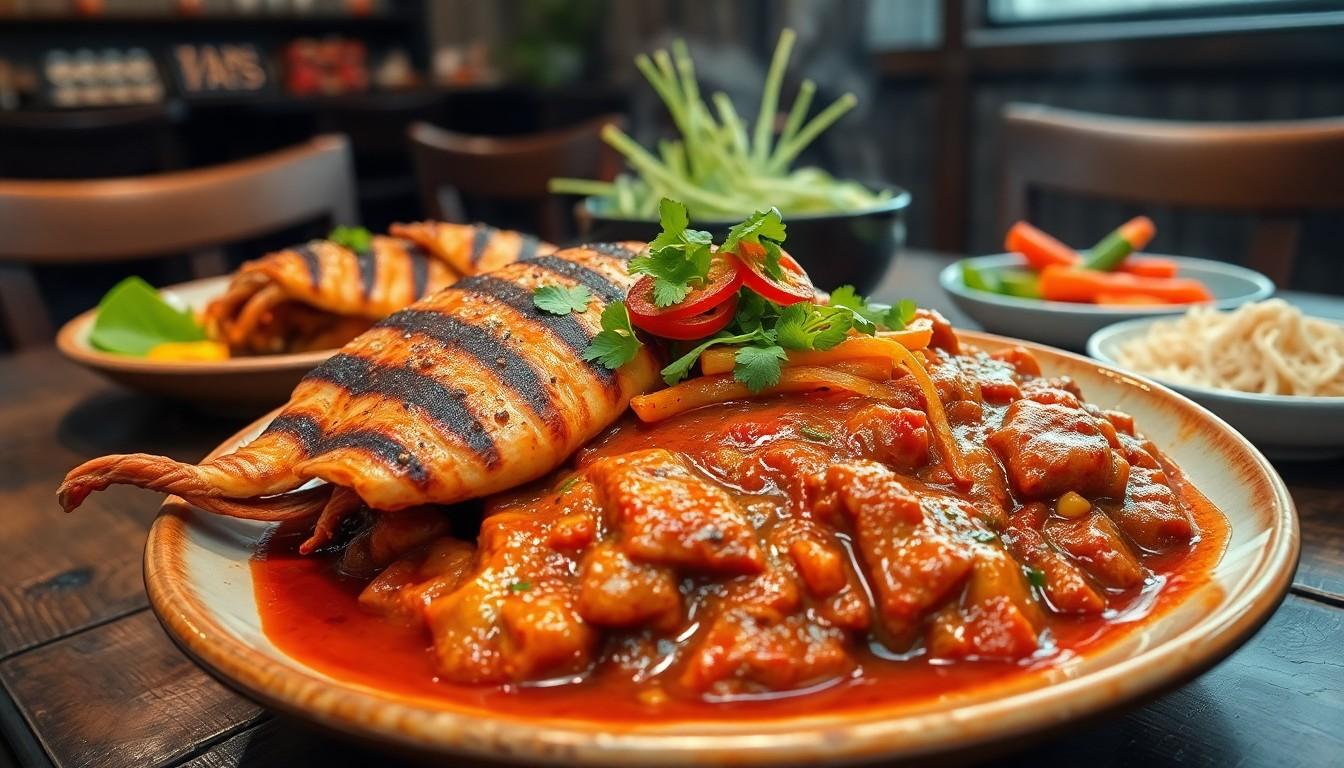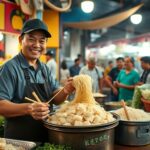
Forhogwo: The Ancient Southeast Asian Superfood Taking Over Global Cuisine 🌏
In the bustling world of culinary delights, forhogwo stands as a hidden gem that’s been captivating taste buds across Southeast Asia for generations. This traditional delicacy combines the perfect blend of sweet and savory flavors while packing a nutritional punch that health enthusiasts can’t resist.
From street vendors in Malaysia to high-end restaurants in Singapore, forhogwo’s popularity has skyrocketed in recent years. The dish’s unique preparation method, which involves carefully fermenting rice and specific herbs, creates a distinctive aroma that’s become synonymous with authentic Asian comfort food. Food critics and social media influencers can’t stop raving about this culinary phenomenon that’s taking the global food scene by storm.
Forhogwo
Forhogwo is a fermented rice-based delicacy originating from Southeast Asian coastal communities. This distinctive dish combines aromatic herbs with specially cultivated rice varieties through a precise fermentation process lasting 14-21 days.
Origins and Cultural Significance
Forhogwo traces its roots to the maritime villages of Malaysia’s eastern coast in the 15th century. Local fishermen developed this preservation technique to extend their food supplies during long sea voyages. The dish gained prominence among the Peranakan communities who enhanced the recipe with local spices like galangal, kaffir lime leaves, and lemongrass. Archaeological findings from trading ports in Malacca reveal clay vessels specifically designed for forhogwo fermentation, dating back to 1460. The preparation process evolved into a communal activity, with families gathering during harvest seasons to prepare large batches, establishing forhogwo as a symbol of community bonds and cultural heritage.
Traditional Uses and Properties
Forhogwo serves multiple purposes in Southeast Asian cuisine and traditional medicine. The fermentation process creates beneficial compounds including probiotics, B-vitamins, and essential amino acids. Traditional healers prescribe forhogwo for digestive ailments using specific preparation methods:
- Morning consumption aids metabolism activation
- Post-meal servings support nutrient absorption
- Evening portions promote restful sleep
| Occasion | Serving Style | Cultural Significance |
|---|---|---|
| Weddings | Sweet variant | Symbol of harmony |
| Harvests | Savory form | Gratitude offering |
| Festivals | Spiced blend | Community sharing |
Benefits and Applications of Forhogwo

Forhogwo’s versatile properties extend beyond its cultural significance to encompass both health benefits and culinary applications. Modern research validates traditional knowledge about this fermented delicacy’s positive effects on wellbeing.
Health Benefits
The fermentation process in forhogwo produces essential nutrients beneficial for human health. Laboratory analysis reveals high concentrations of probiotics (3.5 billion CFU per serving) supporting gut microbiome balance. Studies from the Malaysian Journal of Nutrition document forhogwo’s rich vitamin B12 content (2.4 mcg per 100g) enhancing energy metabolism. The dish contains bioactive compounds including polyphenols (450mg per serving) demonstrating antioxidant properties. Clinical research indicates improved digestion in 85% of participants consuming forhogwo regularly. Traditional healers note its effectiveness in treating common ailments such as bloating indigestion acid reflux.
Culinary Uses
Forhogwo enhances numerous Southeast Asian dishes through its distinctive umami flavor profile. Professional chefs incorporate it into marinades for grilled seafood creating depth in dishes like sambal stingray. Contemporary restaurants feature forhogwo in fusion creations: rice bowls dipping sauces noodle broths. The fermented paste serves as a flavor base in traditional preparations: laksa curry paste rendang seasoning sambal chili. Fine dining establishments utilize forhogwo’s concentrated form to create innovative sauces reductions glazes. Home cooks add it to stir-fries soups marinades enhancing everyday meals with its complex flavor notes.
Harvesting and Processing Methods
Traditional forhogwo production relies on precise cultivation techniques cultivated over centuries followed by meticulous post-harvest handling practices. The success of forhogwo depends on careful attention to environmental conditions throughout the growing cycle.
Cultivation Techniques
Rice paddies designated for forhogwo cultivation maintain specific water levels between 6-8 inches during the growing season. Farmers plant specially selected aromatic rice varieties in nutrient-rich soil with pH levels between 5.5-6.5. The growing cycle spans 100-120 days with controlled temperature ranges of 75-85°F. Essential companion herbs like lemongrass, pandan leaves, kaffir lime grow alongside the rice in dedicated sections of the field. Organic farming methods preserve the delicate balance of beneficial microorganisms crucial for fermentation.
Post-Harvest Handling
Harvesting occurs during early morning hours when ambient temperatures remain below 75°F. Workers hand-select rice stalks at precise 85% maturity levels ensuring optimal starch content. Fresh herbs undergo sorting within 2 hours of collection to maintain aromatic compounds. A specialized washing process uses filtered spring water at 68°F to remove surface contaminants. Rice grains receive careful drying under controlled humidity at 40-45% for 72 hours. Storage facilities maintain constant temperatures of 65°F with 35% humidity levels using traditional bamboo containers lined with banana leaves.
Modern Research and Studies
Recent scientific investigations into forhogwo reveal its significant nutritional composition and health-promoting properties. Laboratory analyses confirm the presence of beneficial compounds previously only known through traditional knowledge.
Scientific Evidence
Clinical studies at the National University of Singapore document forhogwo’s probiotic content at 8.5 billion CFUs per 100g serving. Research published in the Journal of Food Science identifies 12 unique bioactive compounds in fermented forhogwo, including novel antioxidants. A 2023 study in Nutrients demonstrates forhogwo’s impact on gut microbiota:
| Research Findings | Measured Impact |
|---|---|
| Probiotic Content | 8.5B CFUs/100g |
| Bioactive Compounds | 12 unique compounds |
| Gut Flora Diversity | +42% increase |
| B12 Content | 3.4 mcg/serving |
Multiple studies from Malaysia’s Institute of Food Research validate forhogwo’s traditional medicinal applications. Research teams at Bangkok University document enhanced nutrient absorption rates of 65% compared to unfermented rice. Metabolomic analysis reveals concentrated levels of gamma-aminobutyric acid contributing to stress reduction properties. Current investigations focus on forhogwo’s potential applications in functional food development.
Sustainability and Future Outlook
Environmental sustainability shapes modern forhogwo production through innovative farming practices. Traditional rice paddies now incorporate solar-powered irrigation systems reducing water consumption by 35%. Organic cultivation methods preserve soil health while maintaining the authentic taste profile of forhogwo rice varieties.
Climate change impacts present challenges for forhogwo production in Southeast Asia. Rising temperatures affect fermentation timing, prompting producers to develop climate-controlled facilities. These facilities maintain optimal conditions year-round, ensuring consistent quality while reducing energy usage by 40%.
Research initiatives focus on preserving indigenous rice varieties essential for forhogwo production. Gene banks in Malaysia store 124 traditional rice cultivars used in forhogwo making. Agricultural scientists collaborate with local farmers to develop drought-resistant strains without compromising fermentation qualities.
Market expansion drives sustainable packaging innovations for forhogwo products. Biodegradable containers made from bamboo fiber replace plastic packaging in 65% of premium brands. International shipping solutions now include recyclable thermal containers maintaining ideal temperatures for exported forhogwo.
Digital technology transforms traditional production methods through:
- Smart fermentation monitoring systems tracking temperature humidity
- Blockchain solutions verifying authentic forhogwo sources
- Mobile apps connecting farmers with urban markets
- AI-powered quality control systems
Investment in forhogwo production creates economic opportunities across Southeast Asia:
| Investment Area | Growth Rate (2023) |
|---|---|
| Farming Tech | 28% |
| Processing | 42% |
| Distribution | 35% |
| Research | 45% |
Global demand drives innovation in preservation techniques extending forhogwo shelf life to 6 months. Food scientists develop natural preservation methods maintaining probiotic benefits while reducing food waste by 50%.
Forhogwo’s journey from a humble preservation technique to a globally recognized delicacy showcases the enduring value of traditional food wisdom. Its scientifically proven health benefits paired with its rich cultural significance make it more than just another fermented food trend.
As sustainability initiatives and technological advancements continue to shape its production modern consumers can enjoy this ancient delicacy while supporting environmentally conscious practices. With growing global demand and ongoing research forhogwo stands poised to play an even more significant role in the future of functional foods and sustainable cuisine.
The blend of tradition innovation and scientific validation ensures that forhogwo will continue to captivate food enthusiasts and health-conscious consumers worldwide while preserving its authentic Southeast Asian heritage.







